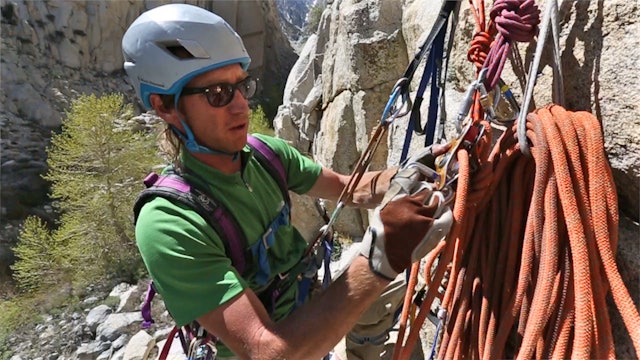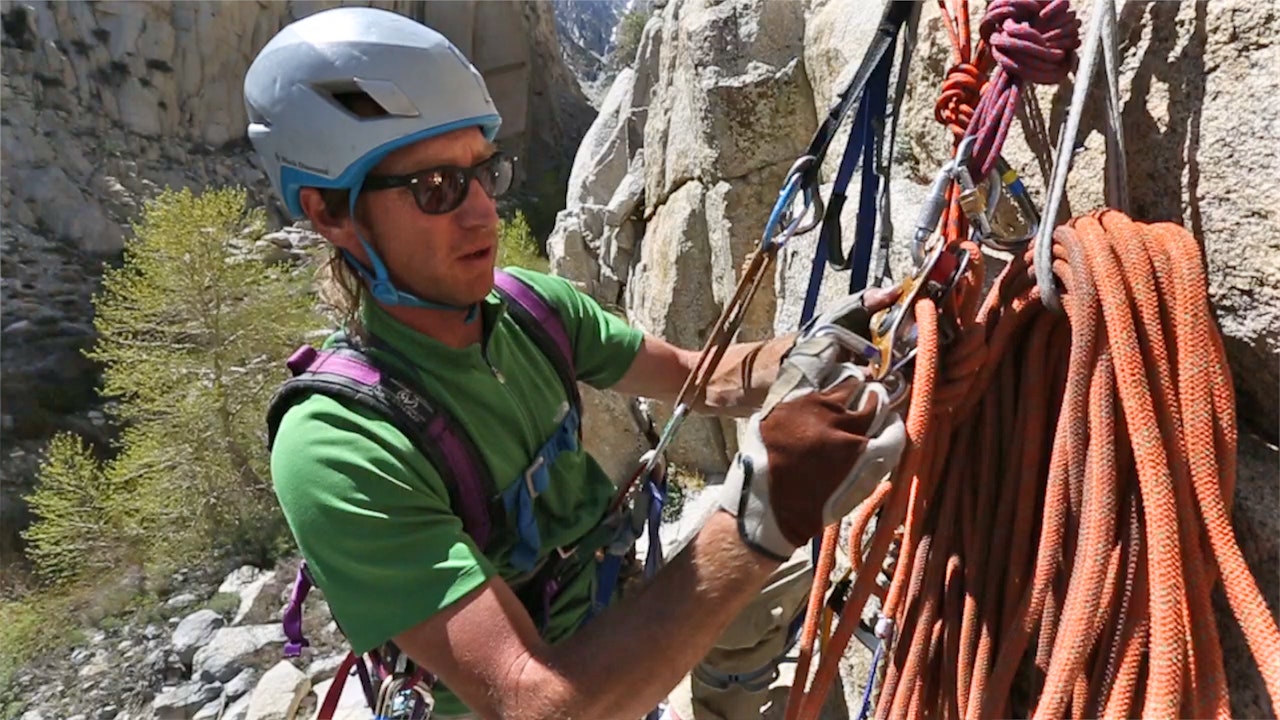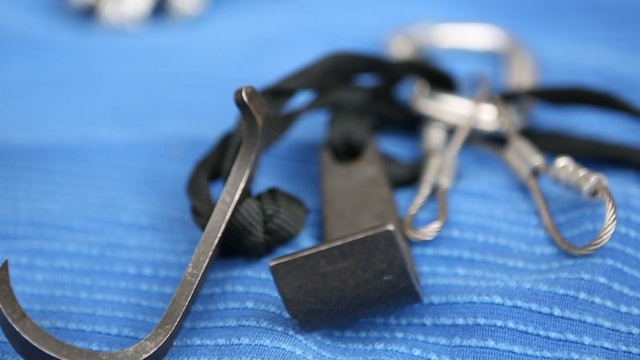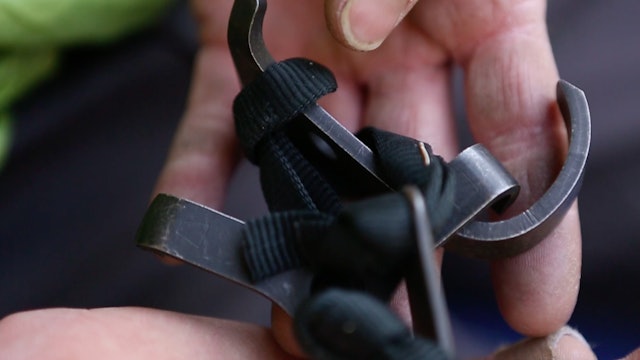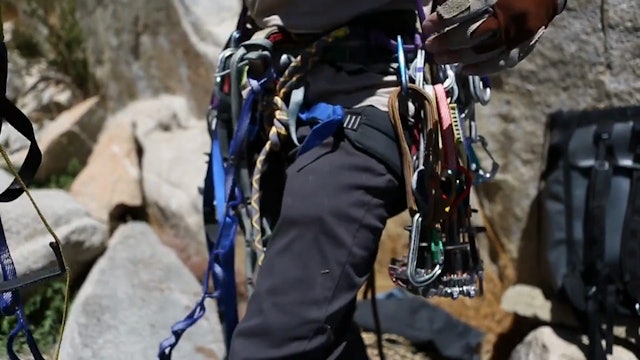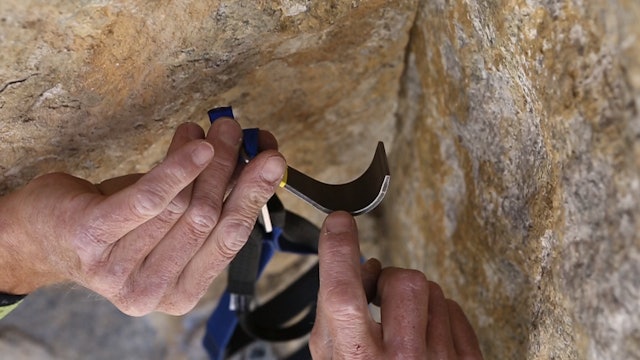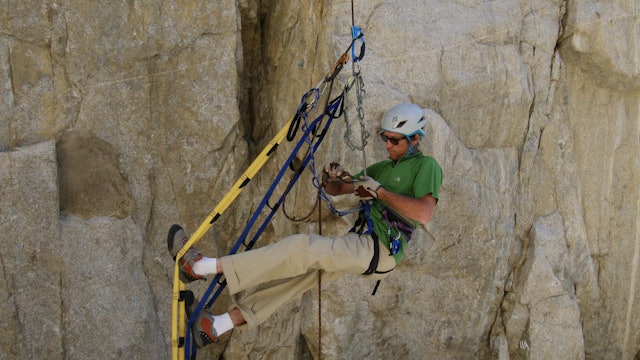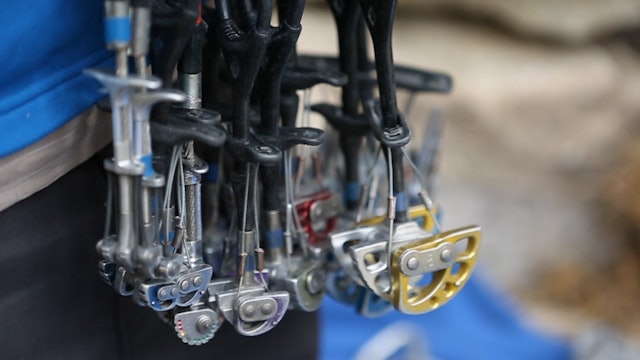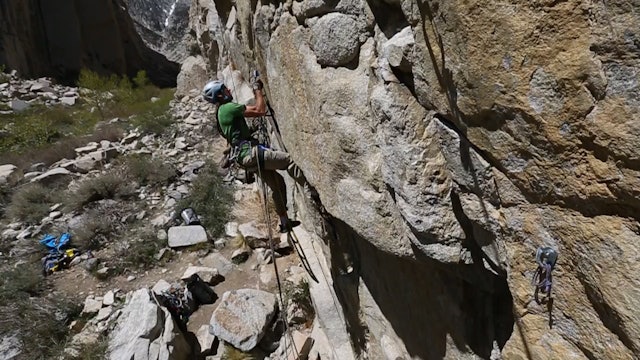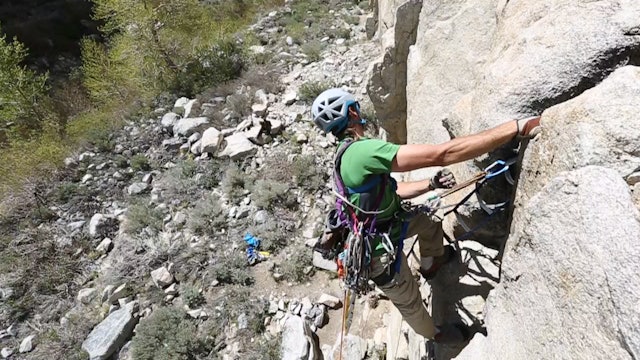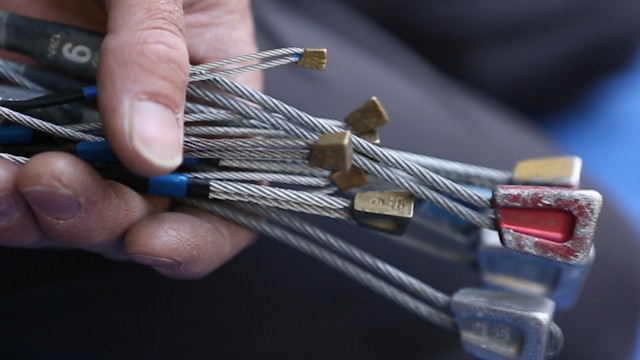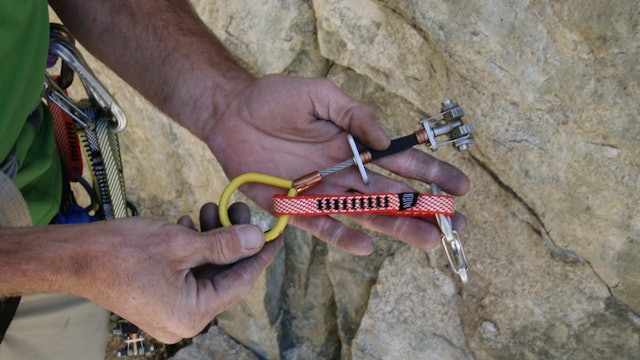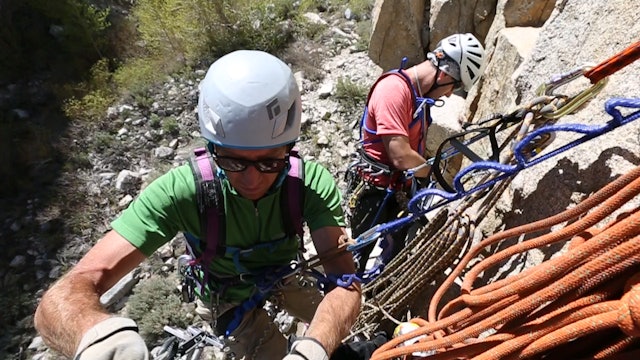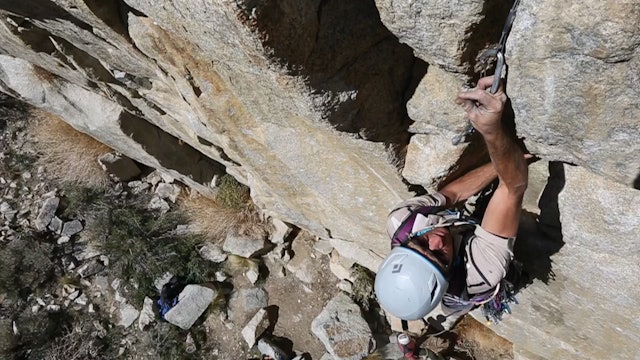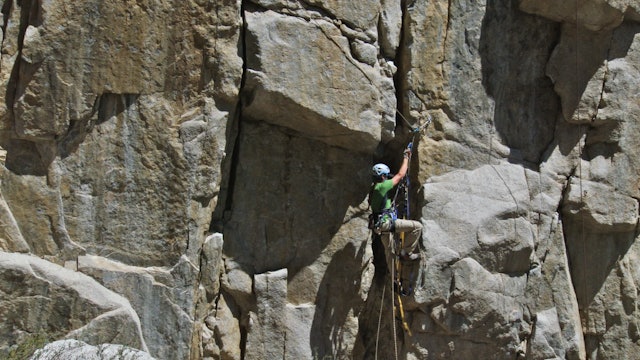Aid Climbing & Big Walls
Welcome to CTT's Aid Climbing & Big Wall series. In this series we learn how Aid Climbers ascend seemingly blank oceans of rock, and impossibly steep or imposing walls.
Aid Climbing is an advanced discipline of climbing. Before viewing this series, you should have already worked through all of our Sport Climbing, Traditional Climbing, and Multi-Pitch Trad Climbing videos. Plus our requisite Anchor Building, Belaying, and Rappelling videos.
Please attempt this technical category, one step at a time, and seek professional instruction and/or mentorship. Incremental goals lead to a lifetime of climbing memories and adventures.
Let’s get started! Our Aid Climbing & Big Walls video series is below. Be careful, and have fun!
Know & Go with ClimbingTechTips.com
Please remember, climbing is inherently dangerous. Climb at your own risk.
-
Aid Climbing: 1. General Aid Gear
In this video we look at the gear it takes to climb big walls using aid climbing techniques.
Aid Climbing Harness - This is bigger, and has a thicker padded waist band and leg loops than a normal climbing harness for added comfort.
Double Gear Sling - This gear sling has two shoulder straps...
-
Aid Climbing: 2. Additional Aid Gear
In this video we look at more of the gear involved in aid climbing.
Personal Kit: Tape, small knife, chap stick, topo of the route, and other smaller items
Hooks - Advanced aid gear used for climbing face features, thin cracks, or some roofs. These include traditional hooks, cam hooks, and...
-
Aid Climbing: 3. Basic Aid Techniques
In this video we review basic techniques used in aid climbing.
Begin by putting on your harness and double checking your system before leaving the ground using the acronym, “BARK” which stands for:
Buckle
Anchor
Rappel
KnotAttach both daisy chains to either the belay loop or tie in ...
-
Aid Climbing: 4. Bounce Testing
In this video we explore the bounce test. Bounce testing is key to building a sequence of solid gear placements. After you've placed your piece, you’ll want to perform the bounce test to make sure the piece is solid, before moving completely onto that piece.
1. Clip your aider (daisy chain and...
-
Aid Climbing: 5. Cam Hooks
In this video we examine the various cam hooks used in aid climbing. Cam hooks are an invaluable tool when aid climbing: they can save time, and when used correctly they are quite “bomber” (or solid) compared to other forms of hooking.
Cam hooks can be used in pin scars created by lost arrow p...
-
Aid Climbing: 6. Jumaring Basics
In this video we examine the basics of jumaring. Jumaring, or “jugging”, is a means of ascending a fixed rope, which in aid climbing is done to either clean a pitch or simply ascend to a previous established highpoint.
First, adjust the length of your daisy chain to match your arm’s reach on y...
-
Aid Climbing: 7. Jumaring Over Edges and Roofs
While jugging a pitch, you will likely encounter numerous obstacles. Roofs and protruding edges are examples.
When jugging through a roof, it’s important to place your jugs just past or just before the edge—as opposed to stopping directly on it.
Step 1: Approach the edge and stop just short...
-
Aid Climbing: 8. Jumaring Texas Style
In this video we look at another jumaring technique known as the Texas style (aka frog or double leg style). Texas style jumaring is a useful technique for ascending a free hanging line because it allows the climber to get all their power into the lower jumar, in order to slide the upper jumar.
... -
Aid Climbing: 9. Backups for Jumaring and Cleaning
In this video we review options for backing yourself up when jumaring and cleaning an aid climb. Backing yourself up when jumaring is a basic necessity for aid climbing survival. Different climbers have different styles—it is simply a matter of preference and application.
The idea with these v...
-
Aid Climbing: 10. Cleaning Pitches
In this video we look at the technique used to clean pitches. We start with a straightforward, vertical pitch.
Attach your jumars to the rope. Weight them by sitting onto your daisy chains. This eliminates most of the stretch in the rope.
Now start jugging the line to clean the pitch.
S...
-
Aid Climbing: 11. Racking for Aid Lead - Part 1 of 2
Racking up for an aid climb or a big wall route is no small task. In this video, we look at all the technical climbing gear that goes into climbing, cleaning, and hauling on a big wall. In general the quantity of any particular gear you’ll bring with you will depend on the route (check topo), as ...
-
Aid Climbing: 12. Racking for Aid Lead - Part 2 of 2
In this video we continue to look at how to rack for leading aid climbs. Now that you know what gear you need, and you know how the process works, let’s consider where to put all that gear you’ll be using!
Be sure to review our video on “General Aid Gear.” The following guidelines are not the ...
-
Aid Climbing: 13. Leading Steep Terrain
Aid climbing poses a very different set of challenges to the follower when compared with traditional free climbing. In this video we discuss some key considerations for the leader in steep terrain, so they don’t make cleaning even more difficult for the follower.
When leading steep pitches, it...
-
Aid Climbing: 14. How to Pendulum While Leading
When leading on aid, you may find yourself at a dead-end crack, looking at a blank wall — where all rock features seem to disappear after a fixed pin, or bolt, or some other piece of fixed gear.
Then, out of the corner of your eye—or on the topo map stuffed into your pocket — you spy more feat...
-
Aid Climbing: 15. How to Pendulum & Lower Out While Cleaning
In this video we look at how to pendulum and lower out when cleaning a pitch of aid. When the follower encounters a pendulum, there are a few ways to accomplish this technical move. We will show you our most commonly used technique.
Be sure to practice this technique at your local crag—and not...
-
Aid Climbing: 16. Aid Climb Like You Lead - Free Climb
In this video we discuss the benefits of integrating free climbing into your aid climbing. If your climb has hand a foot holds, it can be much more efficient to break free of your aid climbing rhythm, and use those natural rock holds to help you step up to the top step of your aiders. Use hand ja...
-
Aid Climbing: 17. Lead Ropes & Haul Lines
In this video we continue our discussion of the gear necessary for aid and big wall climbing.
- Dynamic Lead Line - 60 meters is standard, but some routes may require 70 meter rope. Check the topo or ask other climbers for beta.
- Static Line or Dynamic Line - Used for hauling. A static lin...
-
Aid Climbing: 19. Offset Placements - Offset Nuts
On aid climbs and big walls, offset nuts are an indispensable tool that turn otherwise unprotectable seams or incipient cracks into a reasonable climb. In this video, we look at the benefits of offset nuts, and the pros and cons of softer metals used in some sets.
Offset nuts, unlike standard ...
-
Aid Climbing: 18. Offset Placements - Offset Cams
A set of offset cams can be an essential part of your aid climbing rack. They have two lobes of one size cam, and two lobes of the next size up or down (i.e. larger or smaller). Offset Cams allow you to place a solid cam in a flared crack, which is impossible with a traditional cam. In this video...
-
Aid Climbing: 20. Partner Communication
In this video we review additional commands, specific to partner communication while aid and big wall climbing.
Aiding Command #1: When the lead climber reaches the anchor, builds a bomber (i.e. 100% secure) anchor, and fixes the main rope, they will yell down to the belayer, “Line is fixed!”...
-
Aid Climbing: 21. Transitions
In this video we discuss transitioning between leading, cleaning, and leading again while aid climbing.
Organization is key to ensuring a smooth transition. All aspects from how you rack, to where you clip your jumars when leading, to how you clean the gear, if you use 2 aiders or 3 aiders, an...
-
Aid Climbing: 22. Portaledges
In this video we discuss portaledges. A portaledge is a hanging tent system designed for rock climbers who spend multiple days and nights on a big wall climb. They have a frame that tensions fabric for a flat sleeping surface. They can be finicky to set up, so be sure to practice before you hop o...
-
Aid Climbing: 23. Route Considerations
How do you start out your big wall or aid climbing career? In this video, we discuss how to ease into the sport of Aid Climbing.
When starting out aid climbing, we recommend you take it slow, unless you have a great mentor who is willing to do everything needed if things get dicey and you get...
-
Aid Climbing: 24. The Mental Game of Big Walling
In this video we discuss the mental aspects of climbing big walls. A common phrase you may hear about aid climbing big walls is “wig balling”. This phrase is used to convey the mental breakdown a climber may suffer during multiple days in “the Twilight Zone.”
Our CTT Athlete and AMGA certifie...
